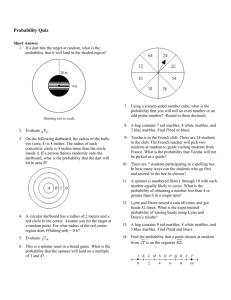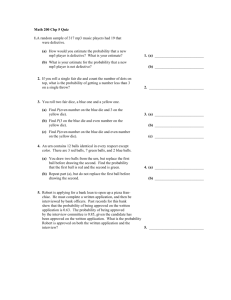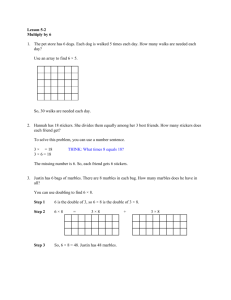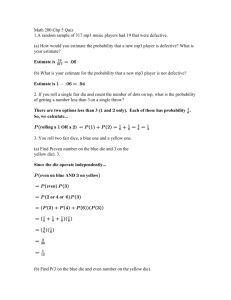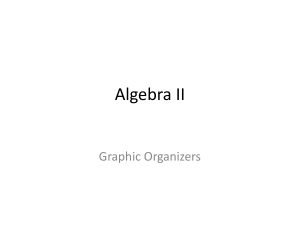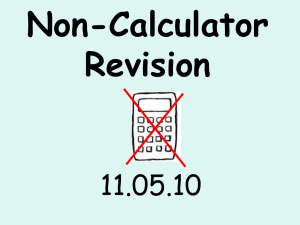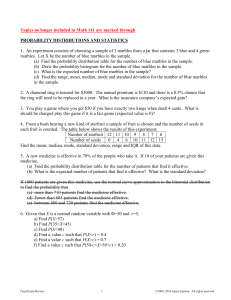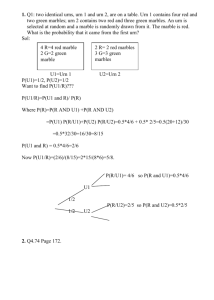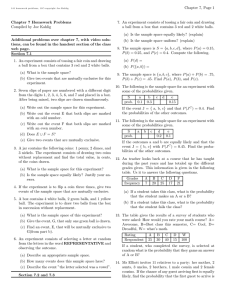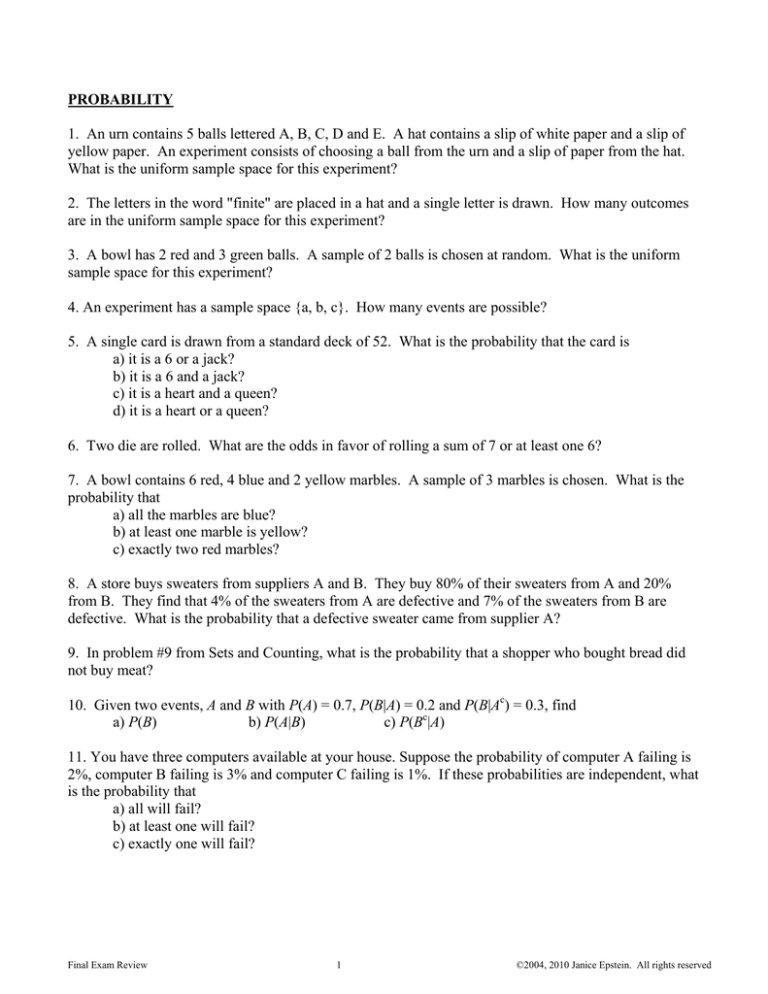
PROBABILITY
1. An urn contains 5 balls lettered A, B, C, D and E. A hat contains a slip of white paper and a slip of
yellow paper. An experiment consists of choosing a ball from the urn and a slip of paper from the hat.
What is the uniform sample space for this experiment?
2. The letters in the word "finite" are placed in a hat and a single letter is drawn. How many outcomes
are in the uniform sample space for this experiment?
3. A bowl has 2 red and 3 green balls. A sample of 2 balls is chosen at random. What is the uniform
sample space for this experiment?
4. An experiment has a sample space {a, b, c}. How many events are possible?
5. A single card is drawn from a standard deck of 52. What is the probability that the card is
a) it is a 6 or a jack?
b) it is a 6 and a jack?
c) it is a heart and a queen?
d) it is a heart or a queen?
6. Two die are rolled. What are the odds in favor of rolling a sum of 7 or at least one 6?
7. A bowl contains 6 red, 4 blue and 2 yellow marbles. A sample of 3 marbles is chosen. What is the
probability that
a) all the marbles are blue?
b) at least one marble is yellow?
c) exactly two red marbles?
8. A store buys sweaters from suppliers A and B. They buy 80% of their sweaters from A and 20%
from B. They find that 4% of the sweaters from A are defective and 7% of the sweaters from B are
defective. What is the probability that a defective sweater came from supplier A?
9. In problem #9 from Sets and Counting, what is the probability that a shopper who bought bread did
not buy meat?
10. Given two events, A and B with P(A) = 0.7, P(B|A) = 0.2 and P(B|Ac) = 0.3, find
a) P(B)
b) P(A|B)
c) P(Bc|A)
11. You have three computers available at your house. Suppose the probability of computer A failing is
2%, computer B failing is 3% and computer C failing is 1%. If these probabilities are independent, what
is the probability that
a) all will fail?
b) at least one will fail?
c) exactly one will fail?
Final Exam Review
1
©2004, 2010 Janice Epstein. All rights reserved

